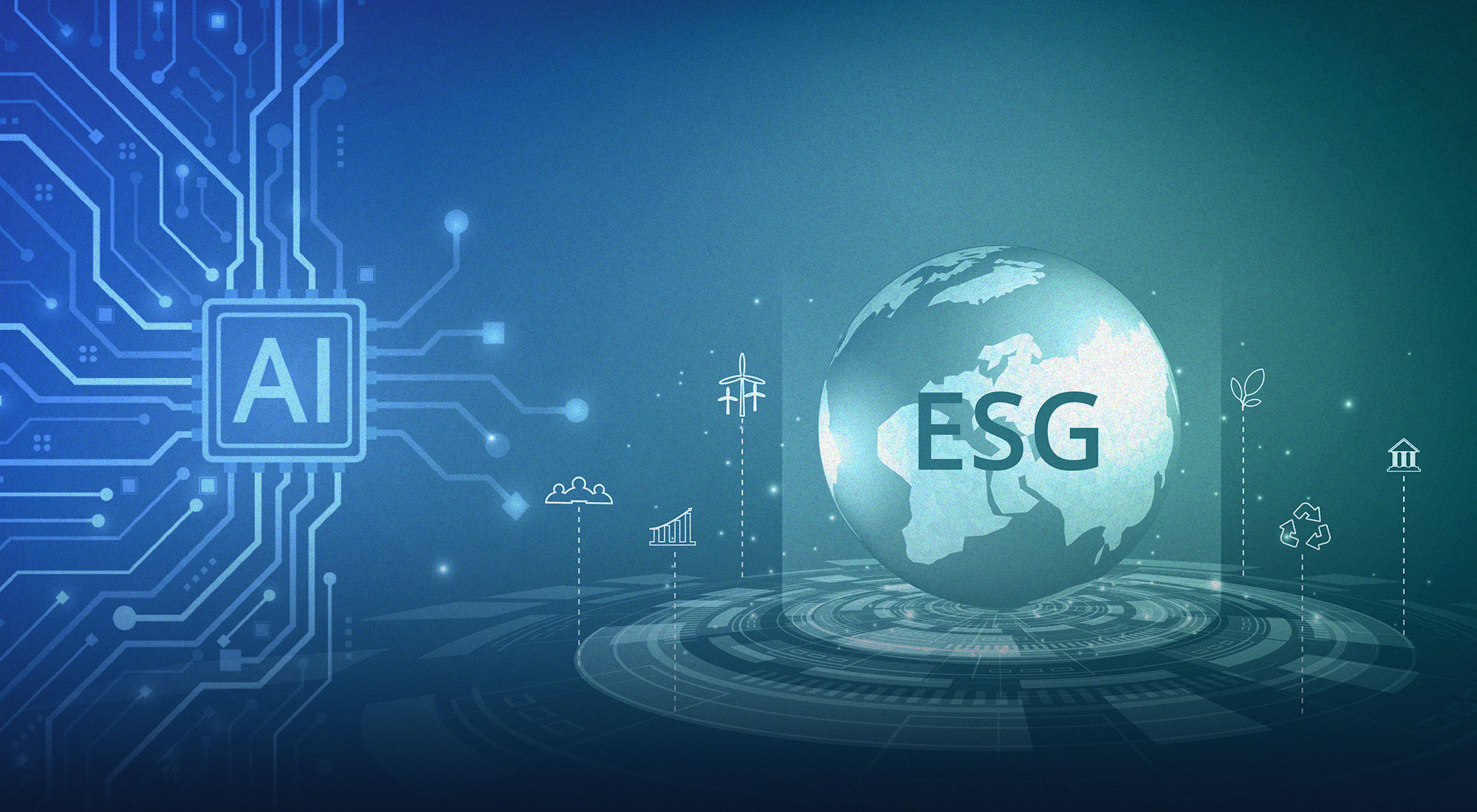Climate change is one of the biggest challenges facing humanity today. As we mark World Meteorological Day on March 23, 2024, the role of Artificial Intelligence (AI) in transforming weather prediction and climate awareness has become increasingly significant. In commemorating this year’s World Meteorological Day, themed “At the Frontline of Climate Action,” we are reminded of the urgency and importance of leveraging innovative technologies like AI in the fight against climate change. This Insight aims to explore the impact of AI technology in two key areas: everyday weather forecasting and understanding climate change. It discusses how AI is enhancing the accuracy of weather predictions and personalizing weather updates for individuals. It also examines the benefits of AI-driven weather forecasting for society at large. The second section of this Insight focuses on the role of AI in simplifying and interpreting complex climate data and the available AI tools for educating the public about climate issues. It also explores how AI can contribute to increasing public engagement in climate action. Finally, the Insight highlights future horizons and innovations in AI technology that can tackle climate challenges and engage the public in climate action.
AI in Everyday Weather Forecasting
How is AI enhancing the accuracy of weather predictions?
The integration of AI into meteorology has been nothing short of transformative, with AI-driven systems increasingly becoming the backbone of modern weather forecasting. By leveraging the immense computational power of AI, meteorologists are now able to process and analyse the colossal amounts of data collected from satellites, weather stations, and other sources at speeds and scales previously unimaginable.[1] This has led to significant advancements in the accuracy of weather predictions, allowing for more precise and reliable forecasts.[2] AI not just improves the general outlook but also specializes in predicting extreme weather events with greater accuracy.[3] This is particularly critical as such events are often the most destructive and require the most urgent and effective response strategies. The ability to accurately predict these extreme conditions can save lives, protect property, and allow for better disaster preparedness plans.
Furthermore, generative AI, which can create detailed simulations and models, contributes to a deeper understanding of weather patterns, effectively enhancing the predictive capabilities of weather forecasting systems.[4] These improvements have far-reaching implications, from allowing individuals to better plan their daily activities to enabling businesses to make strategic decisions that minimize the risk of weather-related disruptions.[5] As computational techniques continue to evolve, AI promises to deliver even more refined and nuanced weather predictions, fundamentally altering our interaction with and response to the atmospheric phenomena that shape our world.[6]
In what ways are AI applications personalizing weather updates for individuals?
The advent of AI applications in meteorology has ushered in a new era of personalized weather services, directly catering to the varying needs of different users and industries. A notable example of such an application is Gale, which is designed to deliver tailored weather summaries. These summaries are not just general overviews; they are meticulously crafted to align with the specific requirements of diverse sectors.[7] For instance, in agriculture, where precise weather information can influence crop yield significantly, Gale’s AI can provide farmers with forecasts that highlight temperature and precipitation expectations crucial for planting and harvesting.[8] Similarly, in aviation, where safety and efficiency are paramount, Gale can generate forecasts that include wind speeds and turbulence reports, enabling better flight planning and risk management. This capability to understand and integrate unique business insights into weather predictions exemplifies how AI is not only refining the accuracy of forecasts, but also making them more relevant and actionable for end-users.[9]
What are the benefits of AI-driven weather forecasting for society at large?
Building on the capability of AI like Gale to deliver tailored weather summaries for various industries, the broader societal benefits of AI-driven weather forecasting are significant and multifaceted.[10] For instance, ensemble learning techniques, which involve the use of multiple predictive models to obtain better performance, are integral to enhancing the accuracy of weather forecasts, particularly in complex weather scenarios.[11] This improved accuracy is crucial as it leads to more reliable and precise forecasts that are essential for planning and decision-making across different sectors of society.[12] Furthermore, as the planet contends with the increasing unpredictability of climate change and the frequency of extreme weather events, the ability to adapt and make informed decisions is more critical than ever.[13]
AI-driven weather forecasting serves as a key tool in this adaptation by offering probabilistic predictions that allow for better risk management in the face of these environmental challenges.[14] The use of ensemble learning techniques is particularly beneficial in this context, as they provide a range of possible outcomes which are crucial for developing robust contingency plans.[15] Consequently, the role of AI in weather prediction is poised to become an indispensable feature in our collective effort to thrive amidst the challenges posed by a rapidly changing climate.[16]
AI’s Role in Understanding Climate Change
How does AI help in simplifying and interpreting complex climate data?
In the face of escalating climate concerns, AI has emerged as a pivotal tool for simplifying and interpreting the labyrinth of complex climate data that overwhelms traditional computational methods. By leveraging its capacity to process and analyse vast datasets swiftly, AI can digest substantial amounts of climate and weather information, which is critical for enhancing our understanding of climate patterns.[17], [18] This capability extends to sifting through extensive datasets such as satellite imagery, thereby enabling a more nuanced interpretation of the Earth’s environmental changes.[19] Moreover, AI’s advanced algorithms can engage with these multifaceted scenarios to extract actionable insights, which are indispensable for policymakers and scientists in decision-making processes.[20], [21] Such insights often include improved forecasting methods for extreme weather conditions and identifying trends that aid in predicting future climatic shifts.[22], [23] AI’s adeptness in this domain illustrates how it has become an indispensable asset for environmental monitoring, effectively acting as a form of “mission control” software for our planet.[24], [25]
What AI tools are available for educating the public on climate issues?
Building on the capabilities of AI in weather forecasting, AI tools extend their utility to broader educational initiatives on climate issues. For instance, AI-driven platforms are increasingly being developed to dissect and communicate complex climate data to the public, making the science behind climate change more accessible and understandable.[26] These tools can demystify where uncertainties in climate projections originate and elucidate the potential impacts of various climate scenarios. Furthermore, organizations like Climate Change AI are spearheading efforts to harness the power of machine learning (ML) in stimulating effective and innovative responses to climate challenges.[27] They offer a hub for researchers, technologists, and climate experts to collaborate on AI-driven solutions and educational resources that can be scaled globally.
Additionally, with the proliferation of AI, there is a promise of significant reductions in greenhouse gas (GHG) emissions, as studies suggest that AI has the potential to mitigate 5-10% of global emissions.[28] This is particularly significant in the realm of public education, where understanding the tangible benefits of AI can lead to increased support for its integration into climate strategies. Thus, AI not only serves as a powerful analytical tool but also plays an increasingly critical role in informing and educating the public about the complexities and solutions to climate change.
How can AI contribute to increasing public engagement in climate action?
Building on the capacity of AI to generate tailored weather reports, its application extends to empowering individuals to take direct action in mitigating climate change. By utilizing AI-driven tools, individuals can receive personalized assessments of their carbon footprint, a crucial step toward heightened self-awareness and responsibility for personal environmental impact.[29] These tools can not only provide an estimation but also guide users through a journey of carbon consciousness, suggesting practical steps to reduce their footprint. Furthermore, AI can revolutionize the way consumers make purchases by offering recommendations for products that are more environmentally friendly.[30] This could include suggestions for energy-efficient appliances, low-carbon transportation options, or sustainable food choices, seamlessly integrating climate action into daily life. The potential for AI to increase public engagement in climate action is significant; however, it is contingent upon governmental support to foster the development and integration of such technologies.[31] By backing climate AI initiatives, governments can facilitate the creation of a more informed and proactive citizenry, capable of making choices that align with the urgent need for climate stewardship.
Concluding Thoughts on AI Skies
The incorporation of AI into the realm of meteorology marks a transformative era in weather forecasting. This integration has catalysed unprecedented improvements in the precision of weather predictions, heralding a new age where the forecasting of extreme weather events with enhanced accuracy is now a reality. As AI-driven platforms burgeon, they play a pivotal role in deconstructing and disseminating intricate climate data to the public, thereby demystifying the science of climate change, and making it more approachable and comprehensible. The vast computational prowess of AI allows meteorologists to sift through and analyse immense volumes of data sourced from satellites, weather stations, and a plethora of other instruments, all at velocities and scales once deemed unattainable. Furthermore, the advent of generative AI, with its capacity to generate intricate simulations and models, provides a richer insight into weather dynamics, substantially bolstering the forecasting systems’ predictive accuracy.
Ensemble learning techniques, which combine insights from various predictive models to improve forecast reliability, play a crucial role, especially in navigating the intricacies of challenging weather conditions. This synergy of multiple models not only enhances the robustness of weather predictions but also underscores the sophistication AI brings to meteorological sciences. Moreover, the potential of AI to engage the public in climate initiatives is immense, promising a future where widespread awareness and action against climate change can be a tangible reality. Nonetheless, this optimistic outlook hinges on the proactive engagement and support from governmental bodies, underscoring the necessity for policies that encourage the development and integration of AI technologies in weather forecasting and climate science.
Despite the significant strides made, the journey of integrating AI into meteorology is not without its challenges. Issues such as potential biases in AI algorithms and limitations in current technologies underscore the imperative for ongoing research and development. Future endeavours should not only aim at refining the precision of AI-driven forecasting systems but should also explore the expansive potential of AI in enhancing climate education and promoting a culture of climate stewardship. As we stand on the brink of this new era, AI’s role in meteorology is not merely an enhancement but a revolutionary shift that simplifies the interpretation of complex climate data, moving beyond the confines of traditional computational methods to offer clearer insights and predictions. In essence, the integration of AI into meteorology is not just a technological evolution; it is a beacon of hope for a more informed and proactive approach towards understanding and mitigating the impacts of climate change.
[1] Science in the News. (n.d.) retrieved March 18, 2024, from sitn.hms.harvard.edu/flash/2024/ai_weather_forecasting/
[2] Ibid
[3] Weather AI: How Artificial Intelligence is Revolutionizing Weather Forecasting. (n.d.) retrieved March 18, 2024, from www.tomorrow.io
[4] Ibid
[5] Ibid
[6] Science in the News. (n.d.) retrieved March 18, 2024, from sitn.hms.harvard.edu/flash/2024/ai_weather_forecasting/
[7] Weather AI: How Artificial Intelligence is Revolutionizing Weather Forecasting. (n.d.) retrieved March 18, 2024, from www.tomorrow.io
[8] Ibid
[9] Ibid
[10] How AI Helps in Weather Forecasting. (n.d.) retrieved March 18, 2024, from www.linkedin.com
[11] Ibid
[12] Ibid
[13] Weather AI: How Artificial Intelligence is Revolutionizing Weather Forecasting. (n.d.) retrieved March 18, 2024, from www.tomorrow.io
[14] How AI Helps in Weather Forecasting. (n.d.) retrieved March 18, 2024, from www.linkedin.com
[15] Ibid
[16] Weather AI: How Artificial Intelligence is Revolutionizing Weather Forecasting. (n.d.) retrieved March 18, 2024, from www.tomorrow.io
[17] How can artificial intelligence help tackle climate change?. (n.d.) retrieved March 18, 2024, from greenly.earth
[18] The US must balance climate justice challenges in the era …. (n.d.) retrieved March 18, 2024, from www.brookings.edu
[19] Some experts see AI as a tool against climate change. …. (n.d.) retrieved March 18, 2024, from www.cbsnews.com
[20] How can artificial intelligence help tackle climate change?. (n.d.) retrieved March 18, 2024, from greenly.earth
[21] The US must balance climate justice challenges in the era …. (n.d.) retrieved March 18, 2024, from www.brookings.edu
[22] Ibid
[23] Some experts see AI as a tool against climate change. …. (n.d.) retrieved March 18, 2024, from www.cbsnews.com
[24] Ibid
[25] How can artificial intelligence help tackle climate change?. (n.d.) retrieved March 18, 2024, from greenly.earth
[26] How AI can help combat climate change – JHU Hub. (n.d.) retrieved March 18, 2024, from hub.jhu.edu
[27] Climate Change AI | Tackling Climate Change with Machine …. (n.d.) retrieved March 18, 2024, from www.climatechange.ai/
[28] Accelerating climate action with AI. (n.d.) retrieved March 18, 2024, from blog.google
[29] Subscribe. (n.d.) retrieved March 18, 2024, from www.bcg.com/publications/2022/how-ai-can-help-climate-change
[30] Ibid
[31] Ibid








